These dehydrated pumpkin roll ups taste just like pumpkin pie but without all the sugar! Made with just fresh roasted pumpkin, apples, and spices, pumpkin leather roll ups are a delicious way to celebrate fall. Kids love them too!
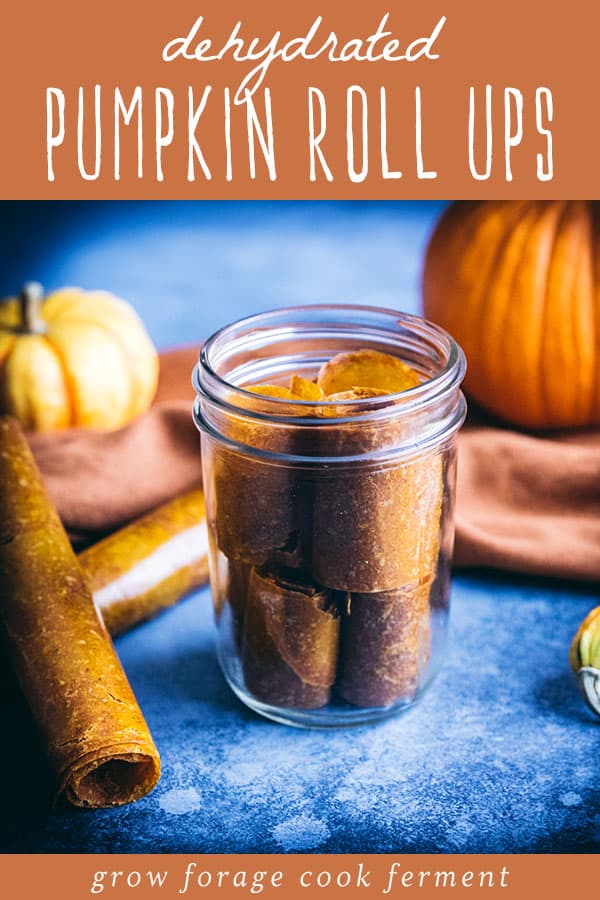
Want to save this post for later?
The Ultimate Guide to Preserving Vegetables Book
I got this recipe for pumpkin pie roll ups from my friend Angi Schneider’s book The Ultimate Guide to Preserving Vegetables.
I’ve known Angi and have followed her blog SchneiderPeeps for quite a while (best name for a blog). We’ve become friends over the years, and I was so excited when her book came out earlier this year!
This book is really amazing, and covers all methods for preserving vegetables, like canning, pickling, fermenting, dehydrating, and freezing.
One thing that I love about it is that she sticks mostly to vegetables, or at least what we think of as vegetables. This is really handy when it’s harvest season and you have a ton of zucchini, tomatoes, peppers, green beans, corn, kale, and so many other veggies to use up!
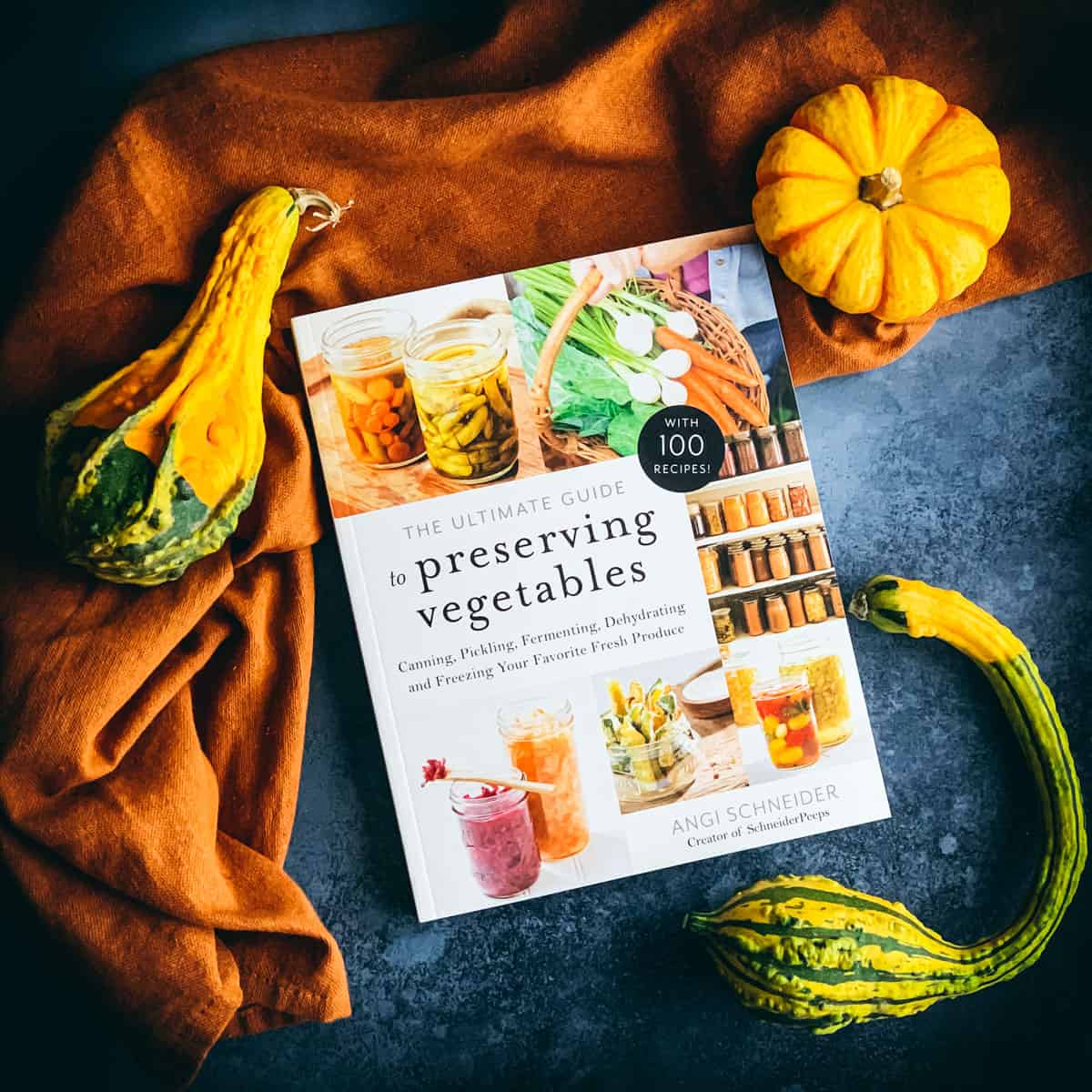
Get recipes for desserts, snacks, breads, side dishes, drinks, and preserving using apples, pumpkins, winter squash, cranberries, and more in my ebook, Cozy Autumn Recipes!
Pumpkin Pie Roll Ups Recipe
This recipe for pumpkin leather roll ups comes together pretty easy.
It does require a dehydrator, and my favorite one is the Excalibur Dehydrator. It is an awesome piece of equipment for preserving the harvest, and you can do so many things with it, even make yogurt!
The dehydrator trays will need to be lined first with either silicone mats or parchment paper.
Roast the Pumpkin
The first step to make these roll ups is to roast a pumpkin.
I love using sugar pie pumpkins because they are naturally sweet and have a lot of flavor. You could also use butternut squash. Just don’t use pumpkins that are meant for carving jack-o-lanterns, as they are watery and don’t have much flavor.
To roast the pumpkin, remove the stem, cut it in half and scoop out the seeds (save them if you want to plant pumpkins next spring).
Rub a little bit of oil (I used coconut oil) on a baking sheet and put the pumpkin cut side down. Roast at 400°F for about 30 minutes, or until a knife pierces the skin easily.
Remove from the oven and let cool for 5-10 minutes, then flip the pumpkins over to cool even more before scooping out the flesh.
Related: 5 Easy Ways to Cook Winter Squash
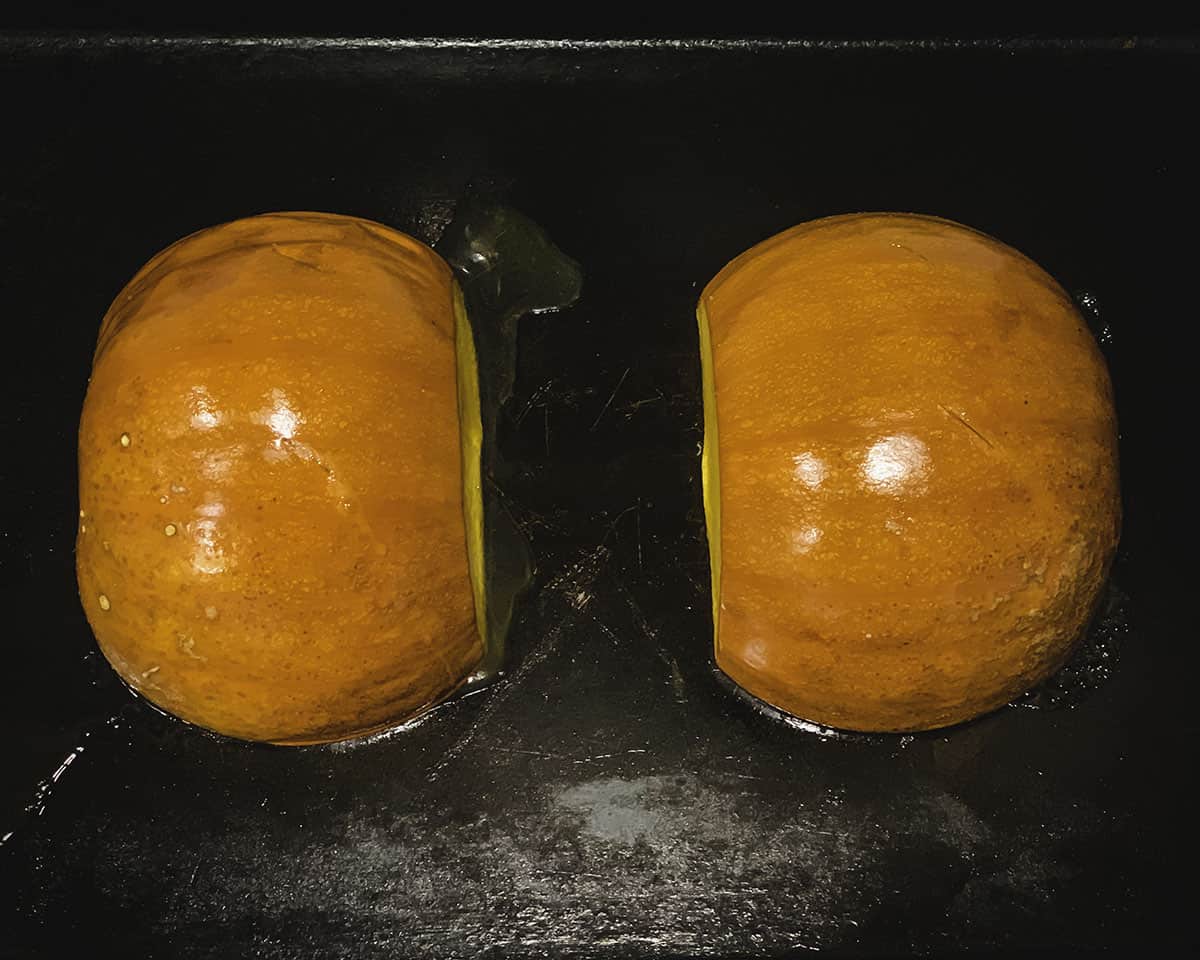
Make the Pumpkin & Apple Mash
While the pumpkin is roasting, slice two pounds of apples and put them in a pot with 1/2 cup of water and lemon juice.
Bring the water to a boil, then reduce the heat to medium and cover the pot. Cook the apples for about 15 minutes, or until they are soft.
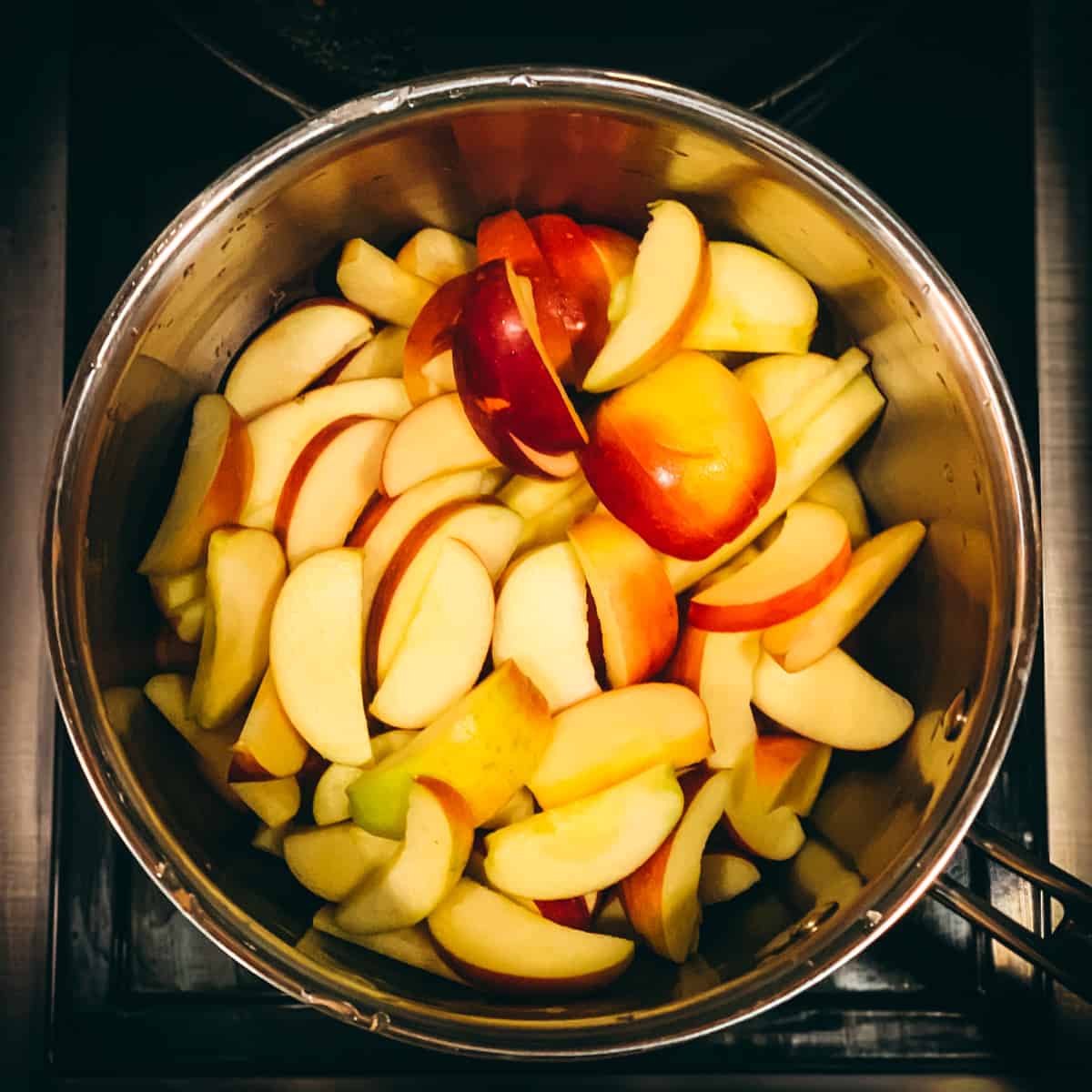
Remove the apples from the heat and let them cool for 5-10 minutes.
Transfer the apples into a blender or food processor, then add the pumpkin and spices. Blend until the mixture is smooth, about the consistency of applesauce.
Dehydrate the Pumpkin Leather
Put about 2 cups of the pumpkin apple mixture on a dehydrator tray that has been lined. Spread it out so that it evenly covers the tray to about 1/4″ thick. It will shrink down quite a bit when it is finished.
Repeat with the remaining 2 cups of pumpkin apple mixture on a second dehydrator tray.
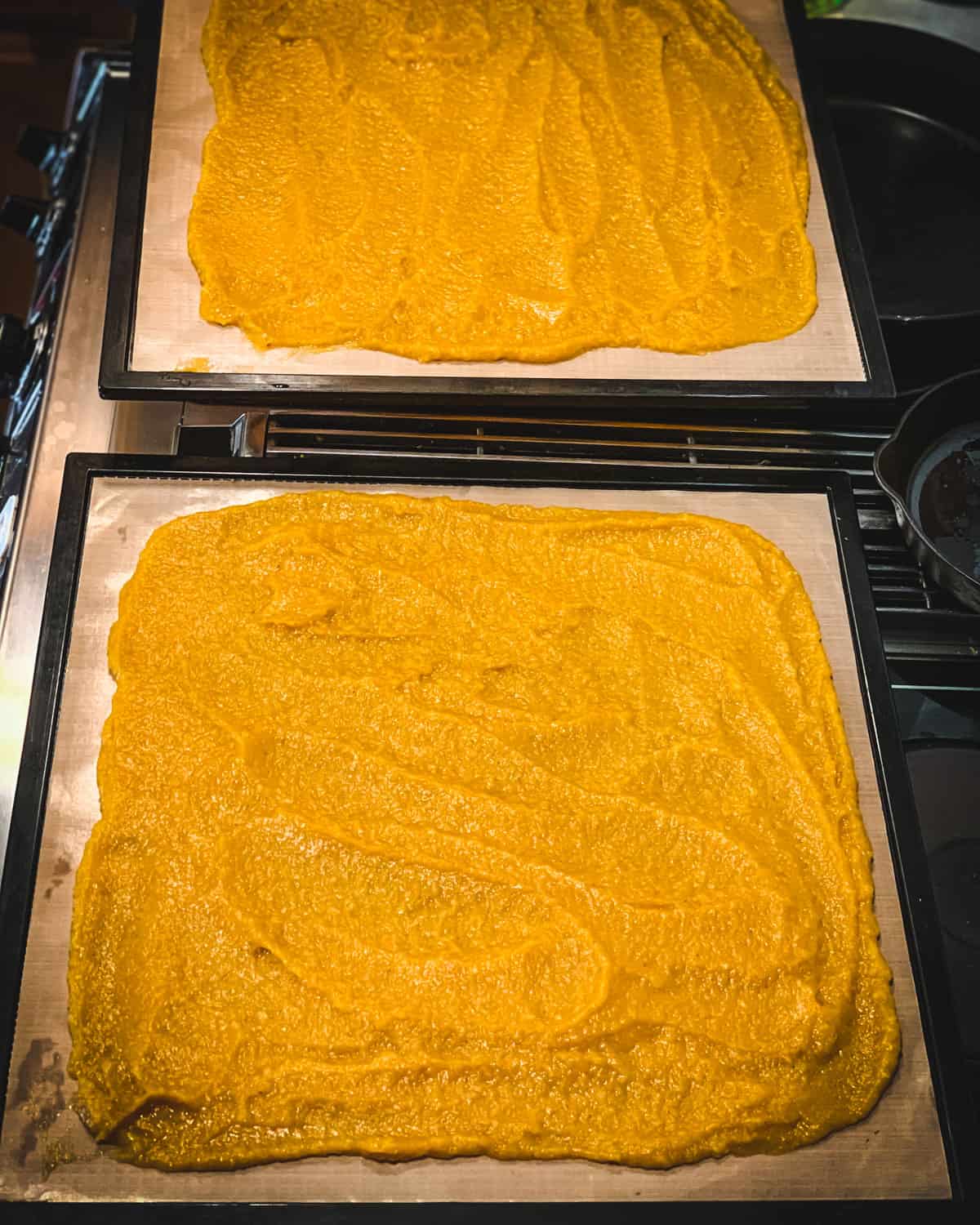
Put the trays into the dehydrator and dehydrate at 135°F (57°C) for 10-12 hours, although it may take more or less time depending on how thick the pumpkin mixture is spread.
Check periodically for doneness, and if there are still moist spots then continue to dehydrate until it is totally dry.
When the pumpkin leather is completely dry but still pliable, gently remove it from the trays. Roll it up and cut it into strips for storing.
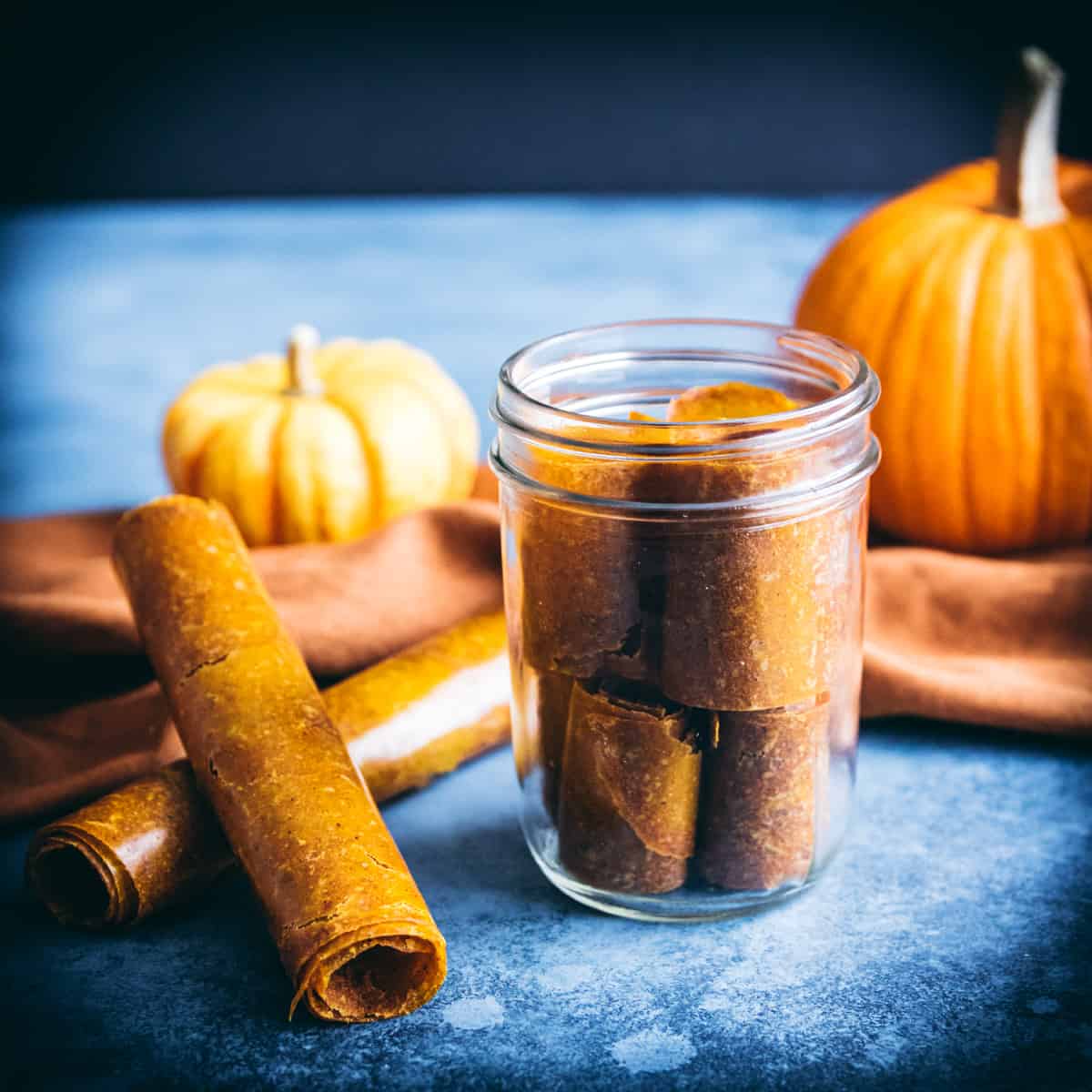
Storing the Pumpkin Leather Roll Ups
Store the pumpkin leather roll ups in a jar with a tight fitting lid at room temperature.
It’s best to condition fruit leather before storing long term, which will also even out the moisture content.
Put the jar of pumpkin leather on the counter out of direct sunlight for 7-10 days, checking each day for condensation.
If there is condensation in the jar, you will want to dehydrate the pumpkin leather for several hours again to remove the excess moisture and recondition.
If there is no condensation in the jar after 7-10 days you can safely store the pumpkin leather roll ups for long term.
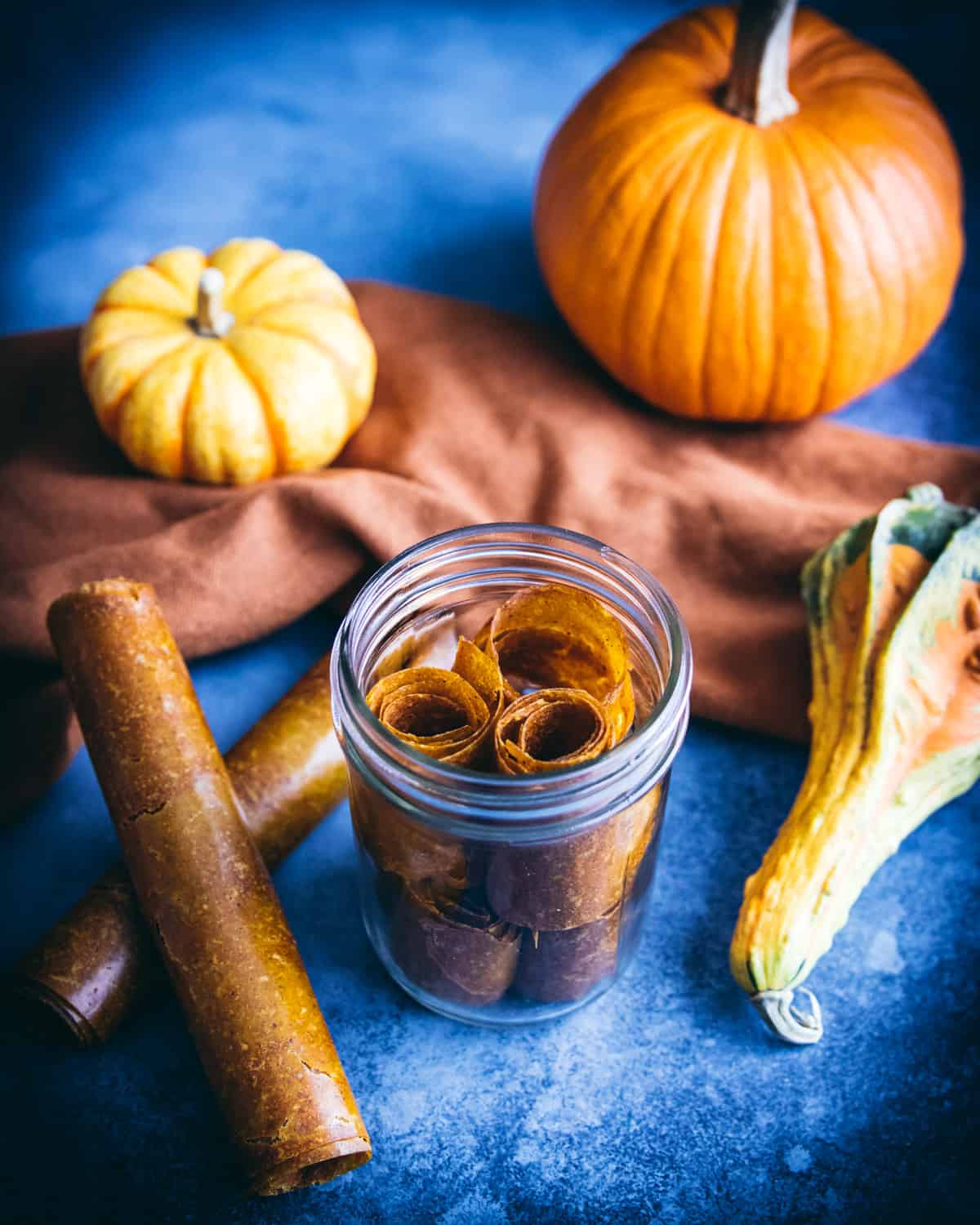
These pumpkin leather roll ups are so delicious and make the perfect fall snack! I love that they don’t have any sugar and just use the sweetness of the pumpkin and apples.
There are just enough spices to make them taste like pumpkin pie!
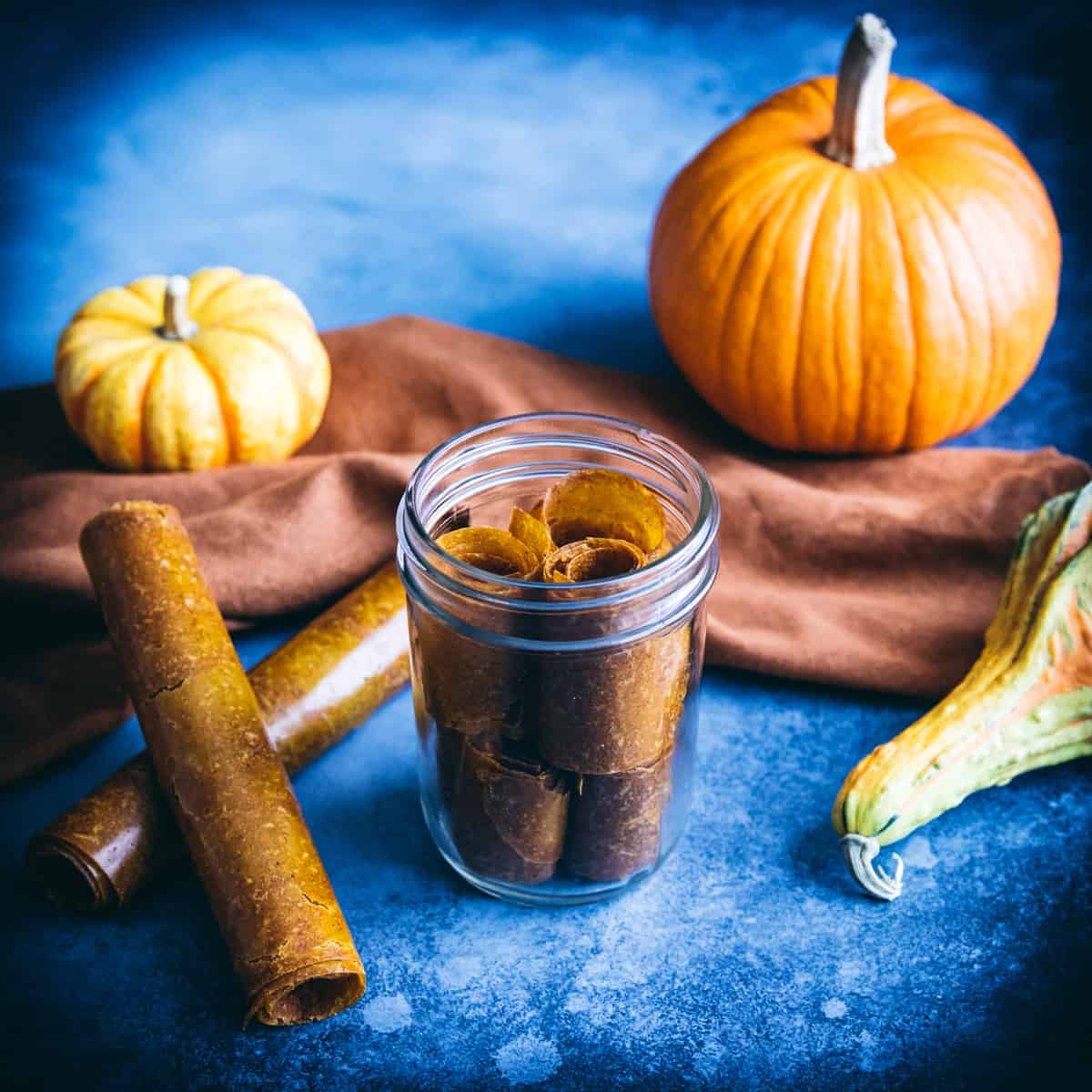
This is definitely a new favorite dehydrator recipe!
I love having The Ultimate Guide to Preserving Vegetables on hand as there are so many great recipes for preserving the harvest!
For more great dehydrator recipes, see dehydrated zucchini chips and dehydrating bell peppers for food storage.
If you love pumpkin recipes give these a try:
- No Bake Pumpkin Coconut Cups
- Pumpkin Granola
- Pumpkin Butter
- Pickled Pumpkin
- Pumpkin Cornbread
- Roasted Pumpkin Wedges
- Pumpkin Kombucha
- Pumpkin Dinner Rolls
Pumpkin Pie Leather Roll Ups
Ingredients
Roasted Pumpkin
- 1 sugar pie pumpkin or butternut squash
- 1 tbsp virgin coconut oil
Pumpkin Leather
- 2 pounds apples cored and sliced
- 1/2 cup water
- 1 tbsp lemon juice
- 2 cups pumpkin puree
- 1/2 tsp ground cinnamon
- 1/4 tsp ground nutmeg
- 1/4 tsp ground allspice
- 1/8 tsp salt
Instructions
Roasted Pumpkin
- Preheat the oven to 400°F (204°C).
- Remove the stem of the pumpkin, cut it in half, and scoop out the seeds.
- Rub a little bit of coconut oil on a baking sheet and put the pumpkin cut side down. Roast for about 30 minutes, or until a knife pierces the skin easily.
- Remove from the oven and let cool for 5-10 minutes, then flip the pumpkins over to cool even more before scooping out the flesh.
Pumpkin Leather
- Put the apples, water, and lemon juice in a medium pot and bring the water to a boil.
- Reduce the heat to medium and cover the pot. Cook the apples for about 15 minutes, or until they are soft.
- Remove the apples from the heat and let them cool for 5-10 minutes.
- Transfer the apples into a blender or food processor, then add the pumpkin and spices. Blend until the mixture is smooth, about the consistency of applesauce.
- Put 2 cups of the pumpkin apple mixture on a dehydrator tray that has been lined with parchment paper or silicone mats. Spread it out so that it evenly covers the tray to about 1/4″ thick.
- Repeat with the remaining 2 cups of pumpkin apple mixture on a second dehydrator tray.
- Put the trays into the dehydrator and dehydrate at 135°F (57°C) for 10-12 hours. It may take more or less time depending on how thick the pumpkin mixture is spread.
- Check periodically for doneness, and if there are still moist spots then continue to dehydrate until it is totally dry.
- When the pumpkin leather is completely dry but still pliable, gently remove it from the trays. Roll it up and cut it into strips for storing.
- Store the pumpkin leather roll ups in a jar with a tight fitting lid at room temperature.
Notes
- My favorite dehytrator is the Excalibur Dehydrator.
- The dehydrator trays will need to be lined first with either silicone mats or parchment paper.
- Don’t use pumpkins that are meant for carving jack-o-lanterns, as they are watery and don’t have much flavor.
- The pumpkin leather will shrink down quite a bit when it is finished.
- It’s best to condition fruit leather before storing long term, which will also even out the moisture content.

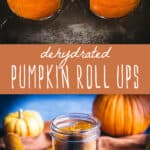
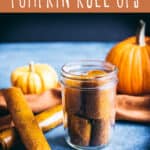
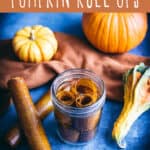

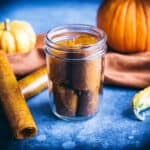

Hi.
Did you try to make lentil leather, too? I was thinking about making a kind of creamy dhal and drying it.
Hi Ronald. No, I haven’t tried lentil leather. It sounds like an interesting idea though!
Hi Ronald. No, I haven’t tried lentil leather. It sounds like an interesting idea though!
how do I “condition” fruit leather? thanks for this one!! cant wait to try it!!
Hi Suzi. Conditioning just means checking for condensation prior to storing your dehydrated food. “Put the jar of pumpkin leather on the counter out of direct sunlight for 7-10 days, checking each day for condensation. If there is condensation in the jar, you will want to dehydrate the pumpkin leather for several hours again to remove the excess moisture and recondition.”
DO you have any good recipes using arononia berries?
Thank you
Hi Lisa. I don’t have any specific recipes for Aronia berries, sorry!
I make apple leather every year for my family and would love to give your recipe a try. What do you mean by conditioning the leather? do you oil it or…?
No. Conditioning means you’re taken steps to ensure your dehydrated food is free from moisture and completely dehydrated. You can learn more about conditioning here.
How much pumpkin is that in grammes approximately?
I measured by volume, not by weight, so I’m not entirely sure how much it weighed.
How many cups was it?
There are 2 cups of pumpkin puree used in the recipe.
Good Morning
Is there a way to make this in the oven if you dont have a dehydrator?
I haven’t tried it myself, but if your oven temperature can go low enough, it could work.